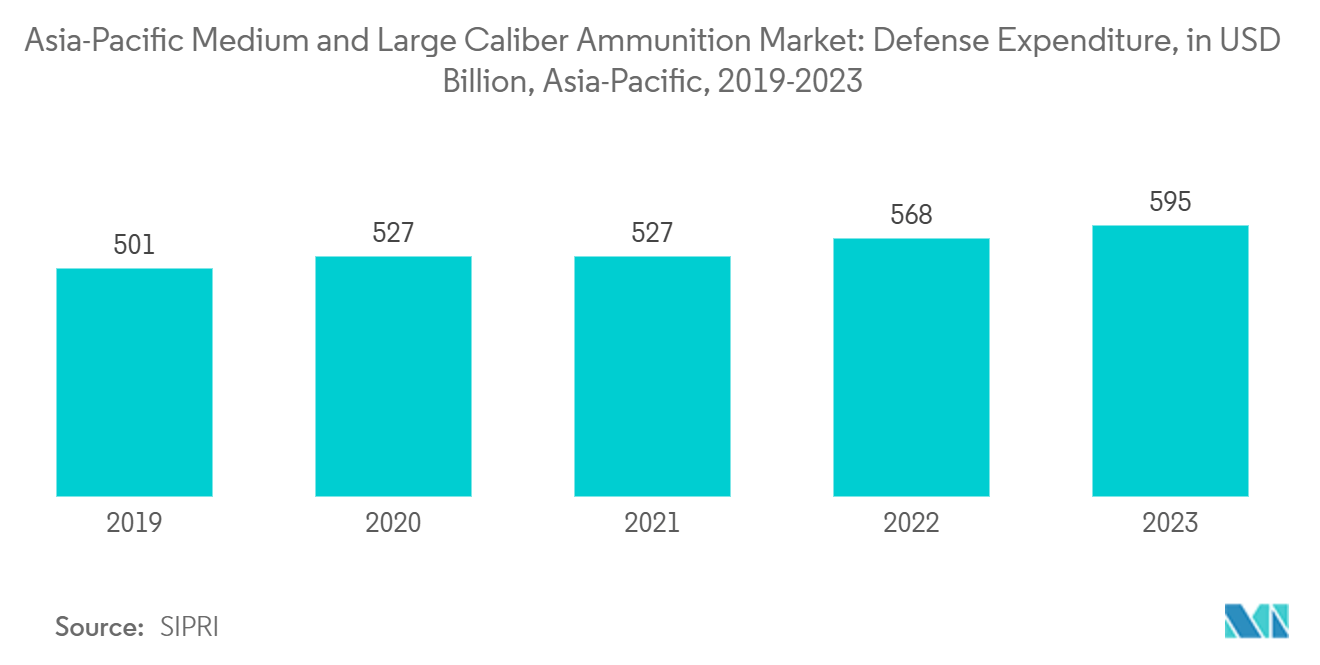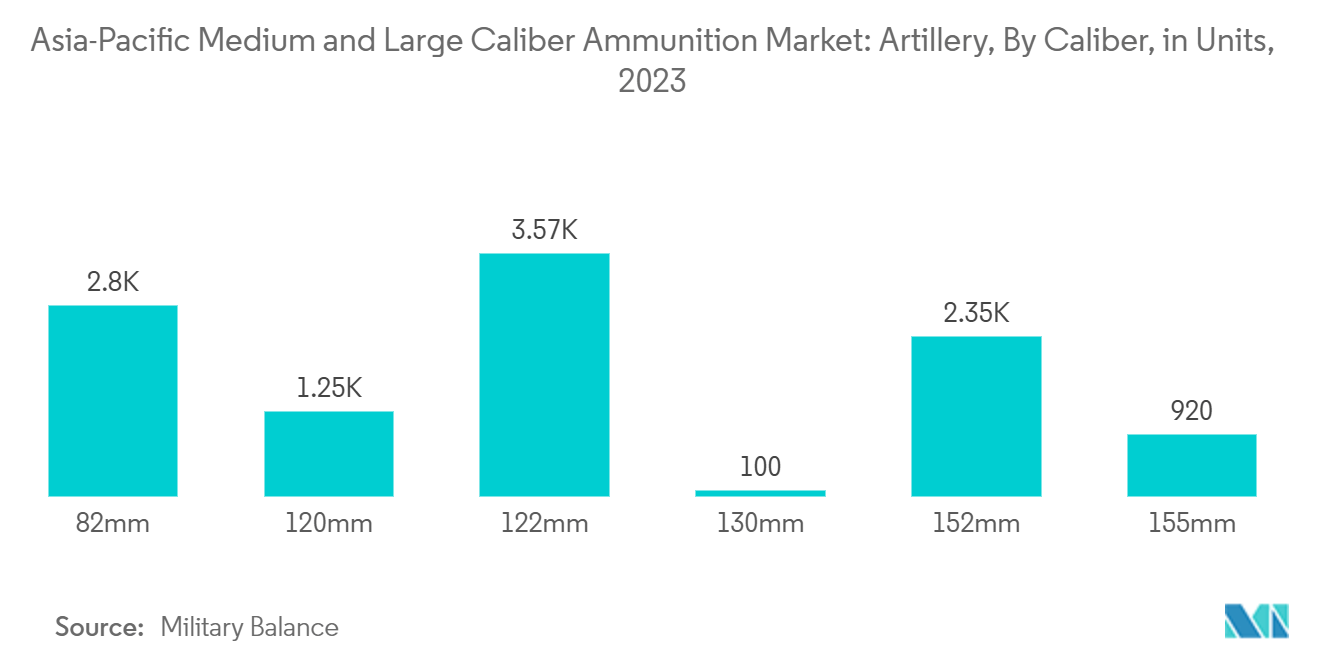Market Trends of Asia-Pacific Medium And Large Caliber Ammunition Industry
Large Caliber Segment is Expected Witness Highest Growth During the Forecast Period
The study focuses on ammunition ranging from 40mm to 155mm calibers. This encompasses all lethal and non-lethal types, including artillery and rockets, calibrated explicitly at 40mm, 52mm, 60mm, 80mm, 120mm, 130mm, and 150mm, and extending up to 155mm.
Political tensions, territorial disputes, and the ambition for global dominance among military powers are reshaping the geopolitical landscape. In response, governments typically ramp up military spending to bolster national security. Driven by the procurement of howitzers and artillery, the large caliber segment is seeing a surge in government investments. Meanwhile, Asia-Pacific nations are partnering with leading ammunition manufacturers to enhance their domestic defense capabilities.
Due to increased military activity along the Indo-Chinese and Indo-Pakistan borders, India has been deploying artillery and mortar weapons. In line with this, in November 2023, a tender under the 'Make in India' initiative was announced, seeking 200 new mounted howitzers with 105 mm caliber guns from Indian firms. Furthermore, in June 2022, Thales Australia and EXPAL Systems S.A. inked a deal to develop large-caliber naval munitions and fuses, bolstering support for the Australian defense force.
Japan, embroiled in long-standing island disputes with China and South Korea, is enhancing its naval capabilities. In January 2024, Japan secured a contract for 200 Block IV Tomahawks, 200 Block V Tomahawks, and 14 Tactical Tomahawk Weapon Control Systems, including training, maintenance, and ancillary services. These advancements and system procurements will drive segment growth in the coming years.

China To Dominate the Market Share During the Forecast Period
Growing military spending, fueled by geopolitical tensions and border disputes between China and its neighboring countries, drives investments into procuring various defense equipment, including ammunition. According to the data provided by the Stockholm International Peace Research Institute (SIPRI), China was the second-largest spender on its military in 2023, spending USD 296.4 billion.
China is the second-largest global military spender on arms and munitions and the largest spender in Asia-Pacific. The country has multiple state-owned and home-grown defense manufacturers that cater to the country's defense needs. Aviation Industry Corporation of China (AVIC), China Electronics Technology Group Corporation (CETC), China North Industries Group Corporation (NORINCO), and China South Industries Group Corporation (CSGC) are some of the significant domestic defense companies that provide China with the weapons and munitions that are required to carry out the country's military activities. China has prioritized its military and economic interests, recently leading to multiple security expansions. As part of these expansions, the country is venturing into geographical areas, causing international unrest and leading to military conflicts.
In addition, the country is expanding its military security to tackle the border conflict with India starting in 2020. Therefore, the government of China is investing in developing its military strength to tackle any adversary military actions. For instance, in February 2024, China showcased its newly developed ASN-301 loitering munition in Saudi Arabia. Designed to infiltrate adversary airspace, the ASN-301's primary function is to loiter until it picks up a radar signal. Upon detection, the ASN-301 targets the signal and precisely strikes. Equipped with a warhead containing 7,000 fragments, the munition is activated by a proximity laser fuse, ensuring a lethal radius of 20 meters.
Given these developments and the deployment of sophisticated weaponry, China's trajectory appears set for accelerated growth in the foreseeable future.


